#USS Arizona BB-30
Text
State Ship Series: USS Tennessee
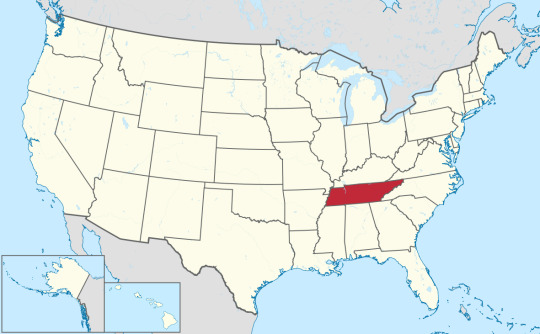
There has been six ships commissioned named after the state of Tennessee in the US Navy. The state was admitted into the United States on June 1, 1796.
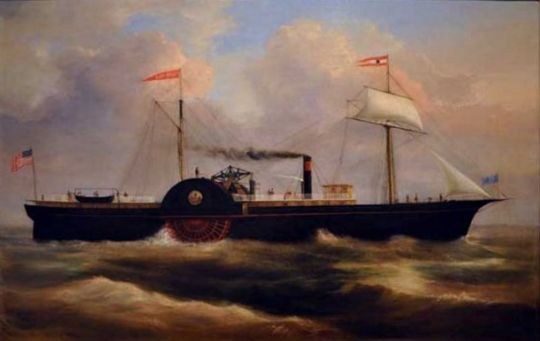
USS Tennessee (1853), side-wheel steamer, in commission from 1862 to 1865. Originally SS Republic, captured by the Confederate in 1862 and renamed CSS Tennessee. Later that year, captured by the Union and commissioned. Renamed USS Mobile.
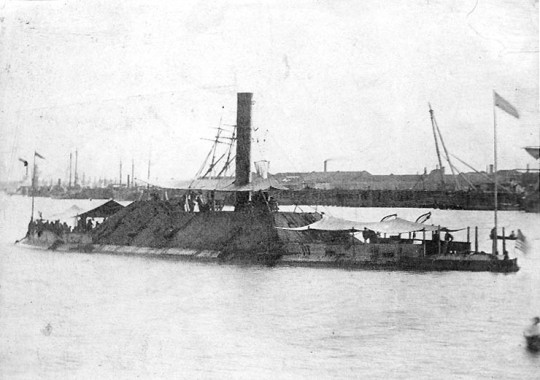
USS Tennessee (1863), casemate ironclad, in commission from 1864 to 1865. She was originally CSS Tennessee and was captured by Union during the Battle of Mobile Bay. She participated in the Siege of Fort Morgan. Scrapped in 1867.
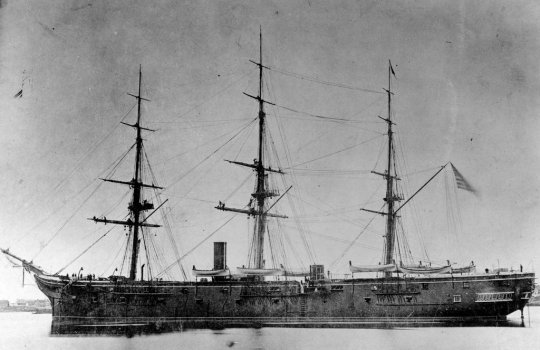
USS Tennessee (1865), Wampanoag class, screw frigate, in common from 1867 to 1886. Originally named USS Madawaska, renamed USS Tennessee in 1869. "In The Steam Navy of the United States, Frank M. Bennet relates that during the time Tennessee was flagship of the North Atlantic Squadron she was 'the largest vessel then in commission in the American Navy, and the era of mastless steel cruisers was yet so far away that she was not suspected, by the youngsters at least, of being obsolete and stood as the type of all that was excellent and majestic in ship construction.' Her spaciousness and the comfort of her quarters as well as her handling characteristics made her a favorite duty station."

USS Tennessee (ACR-10), Tennessee class, Armored Cruiser, in commission from 1906 to 1917. Renamed USS Memphis in 1916 to free the name for BB-43. She was lost on August 29, 1916 in San Diego Harbor when 70 to 100 ft (21 to 30 m) waves started slammed into her. She was rolling 45°, water entered through her gun ports and funnels. This put out the fire in her boilers and losing steam. Over the next hour and a half, she was slammed against the harbor floor and pushed up onto the beach. 43 men were killed or missing and 204 injured. Deemed a total loss as she had suffered the destruction of her propulsion plant and severe distortion of her hull structure. She was salvaged for her guns and other equipment and scrapped from 1922 to 1938.
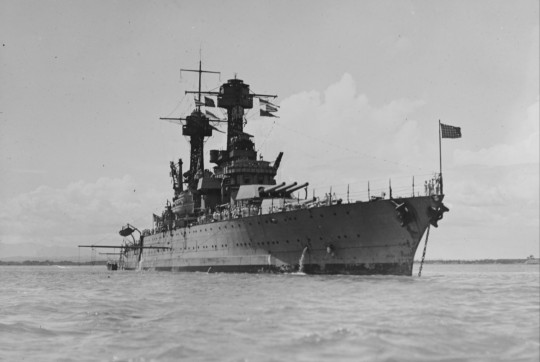
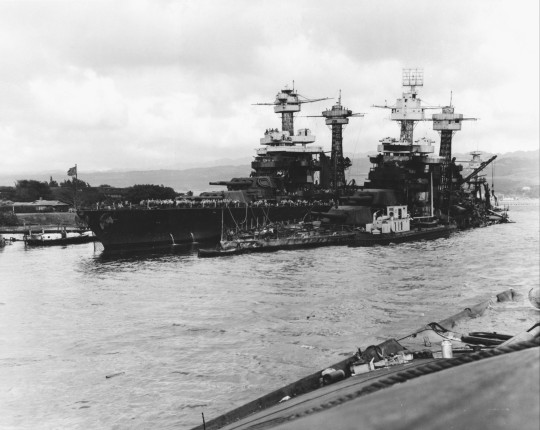

USS Tennessee (BB-43), Tennessee Class, Dreadnought Battleship, in commission from 1920 to 1947. She was part of the "Big 5", the group that consisted of the the most modern battleships of the interwar period. The group compromised of the Tennessee class and Colorado class. Survived the Japanese surprise attack on Pearl Harbor, being hit by two bombs, one of which was the same as the one that destroyed USS Arizona. Luckily, it was a dud. She was protected from torpedoes by being inboard of USS West Virginia. She was pulled from her mooring after USS Maryland was freed. Quickly repaired and went on patrols in 1942. She went back to the yard to be completely rebuilt and modernized from late 1943 to 1944. She fought in the Aleutian Islands Campaign, Gilbert and Marshall Islands campaign, Battles of Tarawa, Battle of Kwajalein, Battle of Eniwetok, Mariana and Palau Islands campaign, Battles of Saipan, Battle of Guam, Battle of Tinian, Battle of Angaur, Philippines campaign, Battle of Leyte, Battle of Surigao Strait (the last battleship engagement), invasion of Iwo Jima, and invasion of Okinawa. She took a kamikaze hit at Okinawa. She earned ten battle stars during WWII. Placed in reserves in 1947, she was scrapped in 1959. Rumor has it the citizens of Tennessee wanted her as a museum ship but the Mississippi river was not deep enough for the battleship to make it.
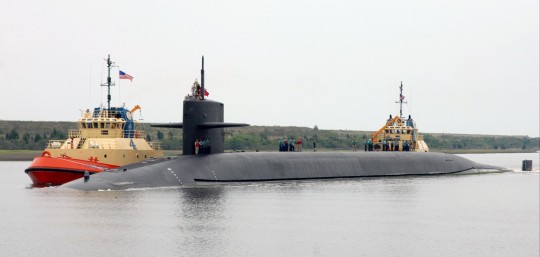

USS Tennessee (SSBN-734), Ohio class, nuclear powered ballistic missile submarine, in commission from 1988 to present.
NHHC: NH 99943, NH 51951, NH 42390, NH 2230
NARA: 306536
source, source, source
#Tennessee#State Ship Series#USS Tennessee#USS Tennessee (1853)#side-wheel steamer#USS Tennessee (1863)#casemate ironclad#USS Tennessee (1865)#Wampanoag class#screw frigate#USS Madawaska#USS Tennessee (ACR-10)#Tennessee class#Armored Cruiser#Cruiser#USS Memphis#USS Tennessee (BB-43)#dreadnought#battleship#USS Tennessee (SSBN-734)#Ohio Class#ballistic missile submarine#submarine#united states navy#us navy#navy#usn#u.s. navy#my post#June
15 notes
·
View notes
Text
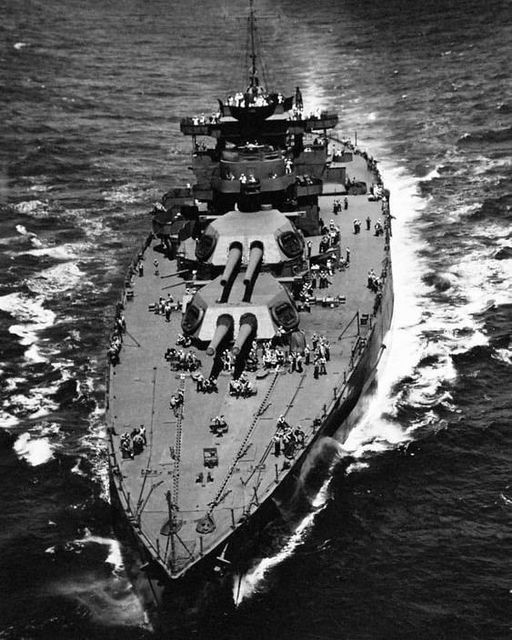
Battleship USS West Virginia underway in the Pacific, circa 1944. Severely damaged by Japanese torpedoes at Pearl Harbor, USS West Virginia returned to service in October 1944. When the Japanese surrendered on September 2, 1945, she was in Tokyo Bay, a symbol of the resilience of the United States Navy. By all accounts, she shouldn’t have been there. She had suffered damage beyond any expectations her designers had. But she was an American warship, a fulfillment of Alfred T. Mahan’s ideas of power projected around the world. Her salvage and repair were a feat of engineering and determination. A phoenix rises from the ashes, but USS West Virginia (BB-48) rose from the waters of Pearl Harbor to contribute to the defeat of the Japanese empire.
Pearl Harbor was shallow, and on December 7, 1941, West Virginia was moored outboard of USS Tennessee (BB-43) at Ford Island in 40 feet of water. As the Japanese attack began, West Virginia, her port side laid bare, became an easy target for enemy torpedoes. The first two struck simultaneously, at 7:55 a.m, as General Quarters sounded. Men poured from hatchways as she began to list. A third explosion rocked the battlewagon. Spotter planes atop main turrets were aflame when a massive explosion on USS Arizona (BB-39) sent chunks of steel flying into the air. Moored nearby, pieces as large as five inches rained down on West Virginia. Gun crews fired on approaching enemy aircraft, adding to the cacophony of the first day of a new war.
Torpedoes ripped into her hull below the waterline and bombs fell from enemy aircraft, one causing the sections of the superstructure to collapse. As fires broke out, the ship’s damage control parties fruitlessly attempted to extinguish them. All hands not severely wounded were at work, fighting fires, manning guns, or assisting with damage control. Up on the bridge, the ship’s commanding officer, Captain Mervyn S. Bennion, had been mortally wounded in the abdomen by an explosion. Mess Attendant second class Doris Miller helped pull sailors through oil and water, up to higher decks not awash as West Virginia began to settle on the bottom. Miller assisted with moving the wounded Bennion, and even though he’d had no instruction in the weapon’s use, manned a machine gun, firing at incoming Japanese planes.
Eventually the order to abandon ship was given. As the wounded were loaded into whaleboats and other small craft, others either crossed over to Tennessee, or dove into the oil-covered water, swimming to Ford Island. When the crew was finally accounted for, there were two officers, including her commanding officer Bennion, and 106 enlisted men killed. Numerous others were wounded, and some would need months to recover from the attack. West Virginia, known by her crews as “Wee Vee” would need much longer.
The damage inflicted in a matter of minutes took over two years to repair. To say the Japanese attack on Pearl Harbor on December 7, 1941, left West Virginia crippled is understating the true extent of the damage. In an official report of ships damage at Pearl Harbor, West Virginia hardly sounds worth repairing:
“West Virginia sank at her berth as a result of four or five aircraft torpedo hits and at least two bomb hits. The vessel rests on a hard bottom with all spaces flooded up to two or three feet below the main deck. Most of the damage from torpedoes is in the midship area, which is badly wrecked both below water and above water. A large bomb passed through the foretop and the boat deck and apparently exploded near the port side on the main or second deck. This explosion caused considerable wreckage and a terrific powder and oil fire, which burned out the whole area and extended to the foremast structure up to and including the bridge. A second bomb hit the top of turret III and passed through the 6-inch top. The nature of the penetration indicated defective material. This bomb did not explode but caused damage to the slide of the left gun. Recently another torpedo hole, and parts of the torpedo, have been located aft under the counter. The steering engine room appears to be wrecked and the rudder is lying on the bottom.” Her salvation was due to the actions of one man, which resulted in West Virginia remaining upright at her moorings, unlike USS Oklahoma (BB-37), which capsized. Lieutenant Commander John S. Harper, the damage control officer aboard West Virginia, quickly initiated counterflooding, keeping the battlewagon upright. As a result, West Virginia was found to be drawing 50 feet 6 inches forward, and 40 feet 10 inches aft, compared to her usual draft of approximately 30 feet. The midship area was considerably damaged, and the oil fire, which had burned for 30 hours, caused extensive damage to the upper works. The hull crinkled as the ship settled on the bottom, and one torpedo had knocked the rudder off. Despite the damage, the decision was made to salvage the ravaged ship, modernize her, and return her to service. Salvage was undertaken in several stages. Patches had to be placed on holes in the hull by divers. These patches were made as cofferdams, which were large wooden structures braced with steel and attached to the ship by divers. Special concrete that would harden in water was then poured into sections around the cofferdams, sealing the bottoms and making them watertight. With the major holes patched, 800,000 gallons of fuel oil, all projectiles and other supplies were removed from the ship to reduce weight. As water was pumped out of the ship, salvage crews began to work through compartments, removing the remains of 66 trapped sailors. Marks on a bulkhead in one compartment indicated three sailors survived there for 16 days. With access to food and water, they held on until the breathable air ran out.The work was done in earnest, performed by naval and civilian personnel and a skeleton crew of sailors and marines which remained attached to West Virginia. Specialists from various companies arrived in Pearl Harbor to break down and repair equipment such as electrical panels and the steam-driven turbine engines which powered West Virginia. Seventy tons of fresh meat had been aboard Wee Vee when she sank, all of which the crew removed via 10 gallon cans. Crews took care to wear rescue breathing apparatus or monitor the air quality as they cleaned compartments. Those containing large stores of paper were some of the most hazardous to empty, as the decaying paper gave off noxious gasses.
On May 17, 1942, West Virginia was once again floated. The first step in her recovery was done, and she was moved to Drydock #1 at Pearl on June 9. Her draft had improved to 33 feet, just barely allowing her to enter the drydock. There, repairs were made to the hull to make it watertight once again. Machinery and other equipment were removed and either repaired at Pearl or marked for later installation stateside. The oil residue left behind had to be removed from surfaces. At the time of the attack, West Virginia still had her original cage masts, both of which were removed in Pearl. Some guns were repaired so the ship could defend itself on the trip home. Crew spaces were cleaned up and returned to a usable state, and while the enlisted galley had burned, the officer’s galley was repaired and put to use for the entire crew. The ship was safely floated again after just three months, but work on the ship continued pier side until April 1943. On April 30, after more than a year of work on temporary repairs, West Virginia was stabilized, repaired, and ready to make the journey to Bremerton, Washington, for final repairs and outfitting.
In early July 1944, over two and a half years after the attack at Pearl Harbor, West Virginia began her sea trials from Puget Sound Navy Yard, Bremerton, Washington. She had been at the yard in Washington for over a year undergoing permanent repairs and modernization. The ship that took to the seas in July 1944 looked nothing like the old battlewagon that had been a target of the Japanese attack. Equipped with updated radar and fire-control equipment, she was ready to unleash the power of her 16-inch main battery on the enemy who had sidelined her years before.
Her first opportunity to exact her toll on Japanese forces came on October 19, 1944, as Wee Vee bombarded targets in Leyte, Philippines, flying the same flag which had been hoisted on that fateful Sunday in December. The next day, she covered landing forces there, providing fire as needed. What might be her crowning achievement came on October 25, when she participated in the battle of Surigao Strait. In what was to be the last engagement of battleships in history, West Virginia opened fire on an enemy ship, firing 16 salvos from her main battery. When the smoke cleared, the target was discovered to be the Japanese battleship Yamashiro, which sank in minutes. Though West Virginia’s captain let the crew claim credit, the damage had been inflicted by five battleships, plus cruisers, firing on the Japanese ship and making it a group effort which sank her.
After her triumphant engagement at Surigao, West Virginia continued her tear across the Pacific, supporting the landings at Mindoro, Luzon, Iwo Jima, and finally, Okinawa. After spending years in dry docks and shipyards, West Virginia put in 223 days in battle, where she shot down eight would-be Kamikazes and assisted with 12 others. Her number came up on April 1, 1945, when one successful Japanese pilot plowed his aircraft into Wee Vee, killing four sailors and wounding 23. But after Pearl, one enemy aircraft was akin to a mosquito bite, and she stayed in the action. On August 31, 1945, West Virginia steamed into Tokyo Bay. A Japanese harbor pilot had come aboard to navigate the battlewagon to her berth. Five members of the ship’s crew, all musicians, were transferred to USS Missouri (BB-63) to augment the band which would play at the official surrender ceremony.As the Japanese delegation boarded Missouri on September 2, West Virginia lay in harbor some distance away. She was the only survivor of the Pearl Harbor attack present in Tokyo Bay that morning. (The cruiser USS Detroit (CL-8), had also been present at Pearl, but received no damage.) As the most important ceremony of the war got underway, West Virginia had no role in the somber occasion. She lay silently, ghastly in the distance, a triumphant reminder of how Japan had gambled and lost.
38 notes
·
View notes
Photo

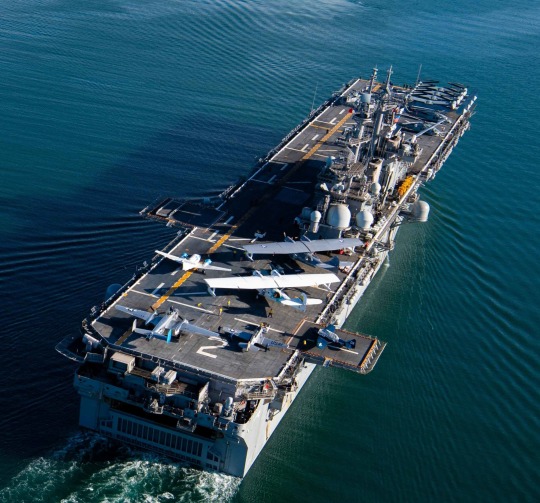

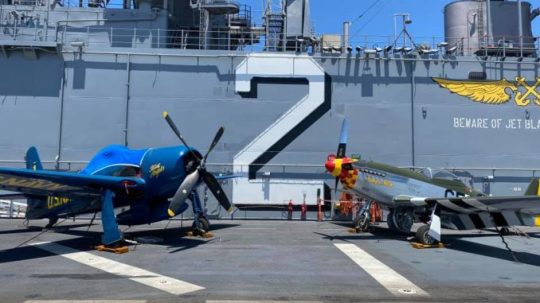
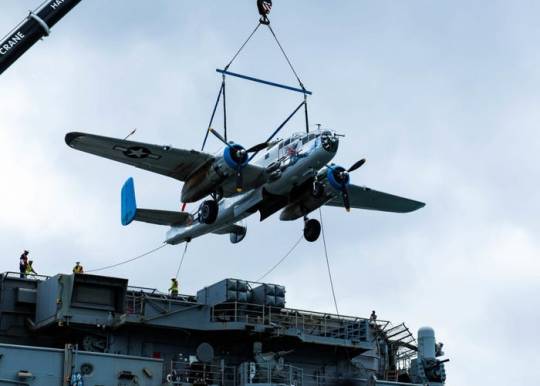

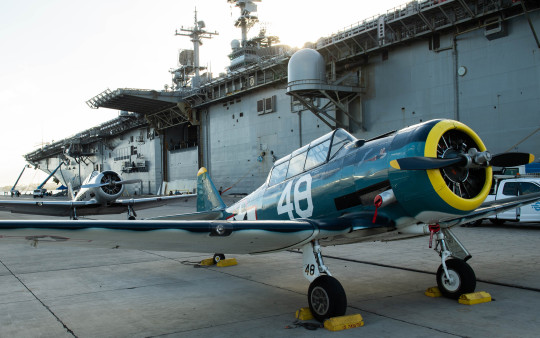
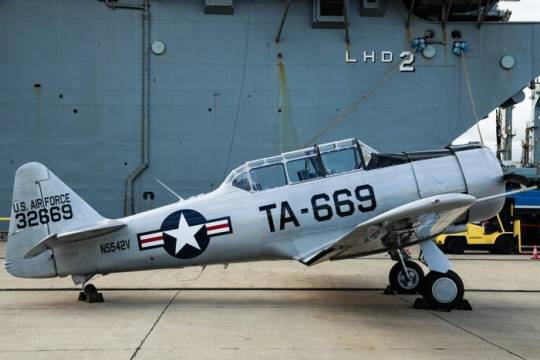

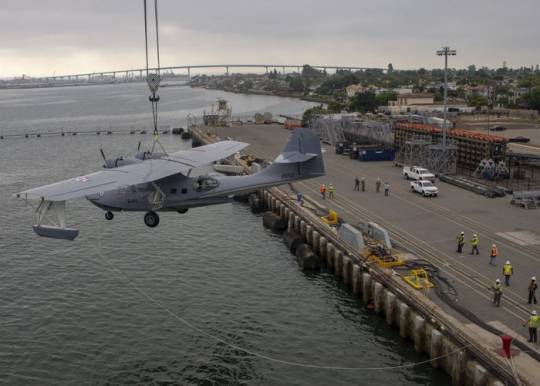
A gathering of “Warbirds”....
....75 years later….
....where World War II began....
....and World War II ended....
PEARL HARBOR, HAWAII (August 10, 2020) -- United States Navy amphibious assault ship USS Essex (LHD 2) arrived here with an unusual collection of aircraft -- 14 vintage World War II airplanes.
Instead of a flight deck normally crowded with 21st century F-35B Lightning II fighter jets and helicopters....the warship was on a unique mission to bring a group of historic military aircraft known as the "Warbirds" across the Eastern Pacific Ocean from California to Hawaii....
....for a series of aerial parades upcoming in late August and early September 2020 commemorating the end of World War II in the Pacific theatre, exactly 75 years earlier, in 1945.
* * * *
“Salute Their Service, Honor Their Hope” is the theme of the commemoration in recognition of the WWII veterans and civilians who contributed to the end of the war....
....at the place where WWII began for the United States with the devastating Imperial Japanese Navy attack on the American Fleet moored at Pearl Harbor on December 7, 1941.
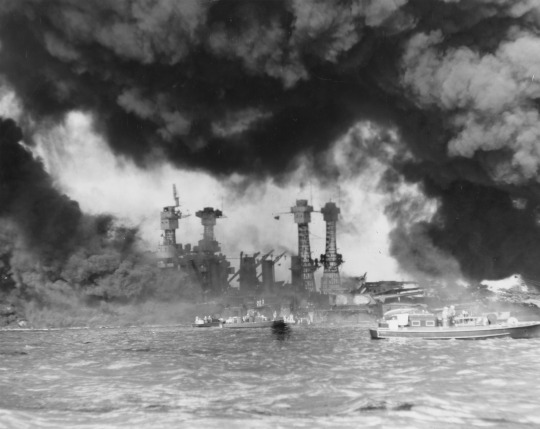
The Imperial Japanese Navy destroys the American Fleet at Pearl Harbor, December 7, 1941....including the deadly (nearly 1,200 American Sailors died onboard) sinking of battleship USS Arizona (BB 39).
The fourteen historic airplanes are scheduled to conduct a series of flyovers around the island of Oahu, including Honolulu, on August 29 and 30, 2020....
....and in conjunction with the September 2, 2020 ceremony in Pearl Harbor aboard the Battleship Missouri Memorial....where the war was officially ended 75 years earlier aboard USS Missouri (BB 63) while moored in Tokyo Bay, September 2, 1945.

The Japanese formally surrender to the United States and Allied Forces aboard battleship USS Missouri (BB 63) September 2, 1945.
* * * *
From top to bottom, the color photos at the top of this post:
>>Note: CLICK the photos for a closer look at some of these amazing aircraft....
#1, #2, #3 - USS Essex (LHD 2) arrives in Pearl Harbor with an historic cargo on her flight deck. Photos: Mass Communication Specialist 2nd Class Kenneth Rodriguez Santiago, USN
#4 - A Grumman F8F Bearcat carrier-based fighter and North American Aviation P-51 Mustang fighter-bomber aboard USS Essex (LHD 2). Photo: Taigh Ramey, WWII vintage aircraft historian
#5, #6 - A North American B-25 Mitchell bomber (the same type of aircraft used for the daring Doolittle raid on Tokyo in 1942) is offloaded from USS Essex (LHD 2) onto the pier in Pearl Harbor. (Note the distinctive USS Arizona (BB 39) Memorial in the background, lower/center....just beneath the aircraft engine in photo #6.) Photos: Mass Communication Specialist 2nd Class Jessica O. Blackwell, USN
#7, #8 - North American T-6 Texan advanced trainers offloaded from USS Essex (LHD 2)....and ready to head for the adjacent airfield. Photos: Mass Communication Specialist 2nd Class Jessica O. Blackwell, USN
#9 - A P-51 Mustang is lifted aboard USS Essex (LHD 2) in San Diego in late July for the ocean crossing to Hawaii. Photo: Taigh Ramey
#10 - A Consolidated Catalina PBY “flying boat” goes aboard USS Essex (LHD 2) in San Diego. Photo: Mass Communication Specialist 3rd Class Wesley Richardson, USN
#U.S. Navy#Navy#USN#USS Essex (LHD 2)#Warbirds#vintage aircraft#history#World War II#commemoration#75th anniversary#Pearl Harbor#air shows#Mass Communication Specialist#F8F Bearcat#P-51 Mustang#B-25 Mitchell#T-6 Texan#Catalina PBY#USS Arizona (BB 39)#USS Missouri (BB 63)
262 notes
·
View notes
Text
USS Maryland (BB-46)

Maryland was a Colorado-class battleship commissioned in 1921. Following her commissioning, Maryland undertook an East Coast shakedown cruise. Shortly thereafter, Maryland was made flagship of Admiral Hilary P. Jones. Maryland found herself in great demand for special occasions. She appeared at Annapolis, Maryland, for the 1922 United States Naval Academy graduation and at Boston, Massachusetts, for the anniversary of the battle of Bunker Hill and the Fourth of July.
From 18 August to 25 September, she paid her first visit to a foreign port transporting Secretary of State Charles Evans Hughes to Rio de Janeiro for Brazil's Centennial Exposition. The next year, after fleet exercises off the Panama Canal Zone, Maryland transited the canal in the latter part of June to join the battle fleet stationed on the west coast. She continued to be a flagship until 1923 when the flag was shifted to Pennsylvania.
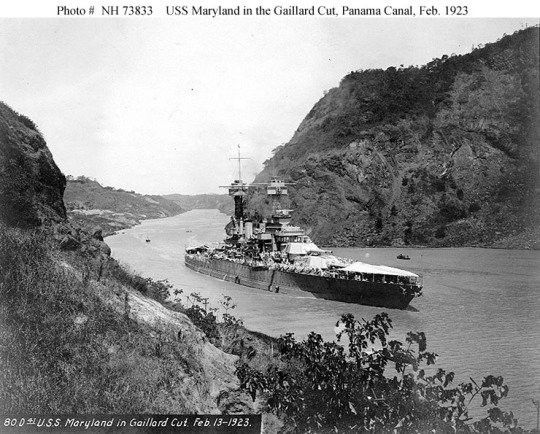
She made another voyage to a foreign port in 1925, this time to Australia and New Zealand. Several years later, in 1928, she transported President-elect Herbert Hoover on the Pacific leg of his tour of Latin America. She was overhauled in 1928–1929, and the eight 3-inch anti-aircraft guns were replaced by eight 5-inch/25 cal guns. Throughout these years and the 1930s, she served as a mainstay of fleet readiness through tireless training operations. She conducted numerous patrols in the 1930s.
In 1940, Maryland and the other battleships of the battle force changed their bases of operations to Pearl Harbor. She was present at Battleship Row along Ford Island during the Japanese attack on 7 December 1941.
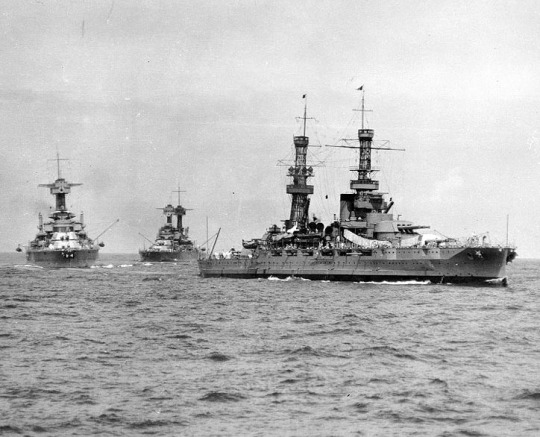
On the morning of 7 December, Maryland was moored along Ford Island, with Oklahoma to port, connected by lines and a gangway. To her fore was California, while Tennessee and West Virginia were astern. Further aft were Nevada and Arizona. The seven battleships, in what is now known as "Battleship Row," had recently returned from maneuvers. Many of Maryland's crew were preparing for shore leave at 09:00 or eating breakfast when the Japanese attack began. As the first Japanese aircraft appeared and explosions rocked the outboard battleships, Maryland's bugler blew general quarters.
Seaman Leslie Short—addressing Christmas cards near his machine gun—brought the first of his ship's guns into play, shooting down one of two torpedo bombers that had just released against Oklahoma. Inboard of Oklahoma, and thus protected from the initial torpedo attack, Maryland managed to bring all her antiaircraft (AA) batteries into action. The devastating initial attack sank Oklahoma, and she capsized quickly, with many of her surviving men climbing aboard Maryland to assist her with anti-aircraft defenses.

Maryland was struck by two armor-piercing bombs which detonated low on her hull. The first struck the forecastle awning and made a hole about 12 ft (3.7 m) by 20 ft (6.1 m). The second exploded after entering the hull at the 22 ft (6.7 m) water level at Frame 10. The latter hit caused flooding and increased the draft forward by 5 ft (1.5 m). Maryland continued to fire and, after the attack, sent firefighting parties to assist her compatriots, especially attempting to rescue survivors from the capsized Oklahoma. The men continued to muster the AA defenses in case the Japanese returned to attack. In all, two officers and two men were killed in the attack.

The Japanese erroneously announced that Maryland had been sunk, but on 30 December, the damaged ship entered Puget Sound Navy Yard for repairs just behind Tennessee. Two of the original twelve 5 -inch/51 cal guns were removed and the 5-inch/25 cal guns were replaced by an equal number of 5-inch/38 cal dual purpose guns. Over the course of the next two months, she was repaired and overhauled, receiving new fighting equipment. Repairs were complete on 26 February 1942. She then underwent a series of shakedown cruises to West Coast ports and the Christmas Islands. She was sent back into action in June 1942, the first ship damaged at Pearl Harbor to return to duty.

During the important Battle of Midway, Maryland played a supporting role. Like the other older battleships, she was not fast enough to accompany the aircraft carriers, so she operated with a backup fleet protecting the West Coast. Maryland stood by on security, awaiting call from other ships if she was needed, until the end of the battle. At the end of the action around Midway, Maryland was sent to San Francisco.
Thereafter, Maryland engaged in almost constant training exercises with Battleship Division 2, Battleship Division 3, and Battleship Division 4 until 1 August, when she returned to Pearl Harbor for repairs, her first time in the harbor since the Japanese attack. She departed Pearl Harbor in early November with Colorado, bound for the forward area. On 12 November, the pig mascot King Neptune came aboard Maryland to initiate her "pollywogs" for the line-crossing ceremony. Maryland steamed for the Fiji Islands where she patrolled against Japanese incursion. The two battleships acted as sentinels to guard against Japanese advance to prevent Japanese forces from threatening Australia. During this duty, the two battleships conducted frequent sweeps for Japanese forces.
In early 1943, with the success of the Solomon Islands campaign, Allied forces went on the offensive. In February 1943, Maryland and Colorado moved to New Hebrides, operating off of Efate.[11] Intense heat there proved difficult and unpleasant for the crew. She then moved to Espiritu Santo to guard against Japanese incursion, but heat and heavy rains plagued this tour of duty.[10] Maryland and Colorado stood out of Aore Island Harbor in August. During a five-week overhaul at Pearl Harbor's shipyard, several 40 millimetres (1.6 in) AA guns were installed on the top decks and foremast as protection against anticipated Japanese air raids in future operations.

Departing the Hawaiian Islands on 20 October 1943 for the South Pacific, Maryland became flagship for Rear Admiral Harry W. Hill's V Amphibious Force and Southern Attack Force in the Gilbert Islands Invasion. Also aboard her were Major General Julian C. Smith, commander of 2nd Marine Division, General "Howling Mad" Smith, commander of the Marine landing forces, and Colonel Evans Carlson, commander of Carlson's Raiders. Maryland returned to Efate Island staging area, where she joined a large task force preparing for an assault on Tarawa.
The battle of Tarawa commenced on 20 November. In her first offensive action of the war, Maryland's guns opened fire at 05:00, destroying a shore battery with five salvos on the southwestern point of Betio Island in the Tarawa Atoll. At 06:00 she commenced a scheduled shore bombardment to soften up Japanese defenses ahead of the landings. Maryland moved closer to shore to attract Japanese fire and locate artillery emplacements, in the process raking Japanese gun emplacements, control stations, pillboxes and any Japanese installations she could spot. At 09:00 as Marine landing forces encountered heavy Japanese resistance and began taking casualties to emplaced crossfire, Maryland provided covering fire to eliminate several Japanese machine gun nests. Her scouting plane then began to cover the progress of the Marines' assault, with Maryland providing artillery support. The plane was damaged and pilot wounded in this action.
After three days of covering the offensive on Betio Island, she moved to Apamama Island to guard Marine landings there. Marines met with only light resistance from 30 Japanese soldiers there, and two prisoners were brought to Maryland. On 7 December, Maryland left Apamama Island for Pearl Harbor. After a brief stopover there, Maryland left for San Francisco for repairs.

Maryland steamed from San Pedro, California on 13 January 1944, rendezvoused with Task Force 53 at Lahaina Roads for two days of loading ammunition, refueling, and provisioning ahead of a new operation supporting the Marshall Islands campaign. On 30 January 1944, she moved to support landings on Roi Island, along with Santa Fe, Biloxi, and Indianapolis, which formed the Northern Support Group of TF 35.
In the predawn hours of 31 January, the ships began a bombardment of Kwajalein Atoll, the opening moves of the battle of Kwajalein. Maryland destroyed numerous Japanese stationary guns and pillboxes. In the course of the battle, she fired so much that she split the liners in the guns of Turret No. 1, putting it out of action for the rest of the day. On 1 February, she continued her attack on Japanese positions as the U.S. landing forces advanced. She became the flagship for Admiral Connally for the next two weeks, resupplying and refueling many of the smaller ships in the operation until she departed with a task unit of carriers and destroyers on 15 February 1944, steaming for Bremerton Navy Yard, where she underwent another overhaul, with her guns being replaced.

Two months later, Maryland sailed westward on 5 May, joining Task Force 52 headed for Saipan. Vice Admiral Richmond K. Turner allotted TF 52 three days to soften up the island's defenses ahead of the assault. Firing commenced at 05:45 on 14 June. They quickly destroyed two coastal guns, then began bombarding Garapan, destroying ammunition dumps, gun positions, small boats, storage tanks, blockhouses and buildings. She then turned her guns to Tanapag, leveling it in heavy bombardment. The invasion commenced 15 June, and Maryland provided fire support for the landing forces.
The Japanese attempted to counter the battleships through the air. On 18 June, the ship's guns shot down their first Japanese aircraft, but on 22 June, a Mitsubishi G4M3 "Betty" medium bomber flew low over the still-contested Saipan hills and found Maryland and Pennsylvania. The Japanese plane dropped a torpedo, opening a large hole in Maryland's starboard bow. The attack caused light casualties, and in 15 minutes she was underway for Eniwetok, and from there she steamed for the repair yards at Pearl Harbor (in reverse the whole time so as not to do further damage to her bow), escorted by two destroyers. Two men were killed in the attack.

With an around-the-clock effort by the shipyard workers, Maryland was repaired in 34 days, departing on 13 August. She then embarked for the Solomon Islands with a large task force, anchoring in Purvis Bay off Florida Island for two weeks before steaming for the Palau Islands on 6 September. She then joined Rear Admiral Jesse B. Oldendorf's Western Fire Support Group. Firing first on 12 September to cover minesweeping operations and underwater demolition teams at the opening of the Battle of Peleliu, Maryland again conducted shore bombardment supporting the landing craft as they approached the beaches on 15 September. Four days later, organized resistance collapsed, permitting the fire support ships to retire to the Admiralty Islands at the end of the month.
Maryland steamed for Seeadler Harbor, Manus where she was assigned to the 7th Fleet under Admiral Kinkaid. The fleet sortied 12 October, and Maryland joined Task Group 77.2, which was the gunfire and covering force for the invasion of Leyte. She, along with four other battleships and numerous cruisers and destroyers, steamed into Leyte Gulf on the morning of 18 October. Maryland took position between Red and White Beaches and began bombarding them ahead of the invasion, which began at 10:00 20 October. Securing the beaches quickly, Maryland then took up a sentinel position in Leyte Gulf to guard the beaches against Japanese counterattack by sea.
For the next several days, Japanese forces launched air raids to counter the incursion. These included the first widespread use of the kamikaze suicide attack. Several days later, U.S. submarines in the South China Sea spotted two Japanese forces on approach: five battleships steaming toward San Bernardino Strait, and another force of four Japanese carriers in northern Luzon.
On 24 October, Maryland, West Virginia, Mississippi, Tennessee, California, and Pennsylvania sailed to the southern end of Leyte Gulf to protect Surigao Strait with several cruisers, destroyers, and PT Boats. Early on 25 October, during the Battle of Surigao Strait, Japanese battleships Fusō and Yamashiro, with their screens, led the Japanese advance into the Strait. At 03:55, the waiting Americans ships launched an ambush of the two Japanese battleships, pounding them with torpedoes and main guns. Torpedoes from the destroyers sunk Fusō. Continued attacks by the task force also claimed Yamashiro. A few of the remaining Japanese ships then fled to the Mindanao Sea, pursued by Allied aircraft.
Following the victory, Maryland patrolled the southern approaches to Surigao Strait until 29 October; she then steamed for the Admiralty Isles for brief replenishment and resumed patrol duty around Leyte on 16 November, protecting the landing forces from continued Japanese air attacks. On 29 November, during another Japanese air attack, a kamikaze aircraft surprised and struck Maryland. The aircraft crashed into Maryland between Turrets No. 1 and 2, piercing the forecastle, main, and armored decks and blowing a hole in the 4-inch steel, causing extensive damage and starting fires. In all, 31 men were killed and 30 wounded in the attack, and the medical department was destroyed but still functional.
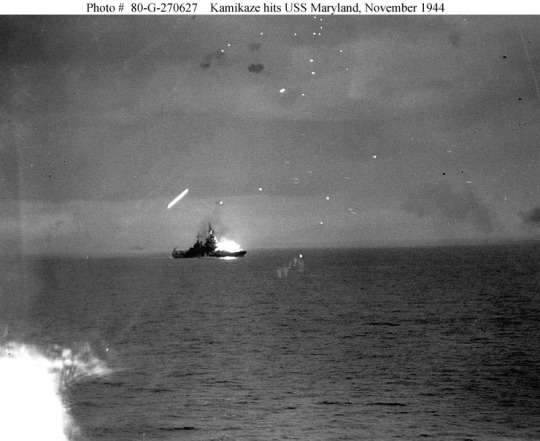
The battleship continued her patrols until relieved on 2 December, when she sailed with two heavily damaged destroyers for repairs. She reached Pearl Harbor on 18 December, and was extensively repaired and refitted over the next couple of months.
After refresher training, Maryland headed for the western Pacific on 4 March 1945, arriving Ulithi on 16 March. There she joined the 5th Fleet and Rear Admiral Morton Deyo's Task Force 54 (TF 54), which was preparing for the invasion of Okinawa. The fleet departed on 21 March, bound for Okinawa.
Maryland was assigned targets on the southern coast of Okinawa to support a diversionary landing, which would distract Japanese forces away from the main landing on the west coast. Japanese forces responded with several air raids, with two of Maryland's radar picket destroyers being struck by kamikaze planes, with Luce sinking. On 3 April, she was moved to the west coast invasion beaches to assist Minneapolis in destroying several shore batteries. Following the land invasion, she remained with the support force off Bolo Point providing artillery support for the invading troops.

Maryland continued fire support duty until 7 April, when she steamed north to intercept a Japanese surface force with TF 54. The Japanese ships, including the Yamato, came under constant U.S. air attacks that day, and planes of the Fast Carrier Task Force sank six of the 10 ships in the force. At dusk, a kamikaze loaded with a 551 lb (250 kg) bomb crashed the top of Turret No. 3 from starboard. The explosion wiped out the 20 mm mounts and caused a large fire. The 20mm ammunition ignited from the heat, causing further casualties. In all, 10 were killed, 37 injured and 6 missing following this attack. Maryland remained on station for the next week and continued her artillery support mission through several more air raids. Turret No. 3, damaged but usable, remained silent for the remainder of this mission.
On 14 April, Maryland left the firing line at Okinawa and escorted several retiring transports. They steamed via the Mariana Islands and Guam to Pearl Harbor, and she reached the Puget Sound Navy Yard at Bremerton on 7 May for extensive overhaul. All of her 5 in guns were removed and replaced by sixteen 5 inch/38 cal guns in new twin mounts. Turret No. 3 was repaired and the crew quarters were improved. She completed repairs in August, leaving for tests and training runs just as Japan surrendered, ending the war.
She next entered Operation Magic Carpet fleet. During the remaining months of 1945, Maryland made five voyages between the west coast and Pearl Harbor, returning more than 8,000 servicemen to the United States.
Arriving at Seattle, Washington on 17 December, Maryland completed her Operation Magic Carpet duty. She entered Puget Sound Naval Shipyard on 15 April 1946, and was placed in commission in inactive reserve on 16 July. She was decommissioned at Bremerton on 3 April 1947, and remained there as a unit of the Pacific Reserve Fleet. Maryland was sold for scrapping to Learner Company of Oakland, California on 8 July 1959.
On 2 June 1961, Governor of Maryland J. Millard Tawes, dedicated a monument to the memory of Maryland and her men. Built of granite and bronze and incorporating the bell of "Fighting Mary", this monument is located on the grounds of the State House in Annapolis.
174 notes
·
View notes
Photo

Reposted from @oldvintagenewyork - [SPECIAL IN COLOUR 4] USS. BB-39 "Arizona" on the East River in New York City, near the Brooklyn Bridge on its wav to sea trials, 1918. USS Arizona was a Pennsylvania-class battleship built for and by the United States Navy in the mid-1910s. Named in honor of the 48th state's recent admission into the union, the ship was the second and last of the Pennsylvania class of "super-dreadnought" battleships. Although commissioned in 1916, the ship remained stateside during World War I. Shortly after the end of the war, Arizona was one of a number of American ships that briefly escorted President Woodrow Wilson to the Paris Peace Conference. The ship was sent to Turkey in 1919 at the beginning of the Greco-Turkish War to represent American interests for several months. Several years later, she was transferred to the Pacific Fleet and remained there for the rest of her career. Aside from a comprehensive modernization in 1929–1931, Arizona was regularly used for training exercises between the wars, including the annual Fleet Problems (training exercises). When an earthquake struck Long Beach, California, on 10 March 1933, the Arizona's crew provided aid to the survivors. In July 1934, the ship was featured in a James Cagney film, Here Comes the Navy, about the romantic troubles of a sailor. In April 1940, she and the rest of the Pacific Fleet were transferred from California to Pearl Harbor, Hawaii, as a deterrent to Japanese imperialism. During the Japanese attack on Pearl Harbor on 7 December 1941, Arizona was bombed. After a bomb detonated in a powder magazine, the battleship exploded violently and sank, with the loss of 1,177 officers and crewmen. Unlike many of the other ships sunk or damaged that day, Arizona was irreparably damaged by the force of the magazine explosion, though the Navy removed parts of the ship for reuse. The wreck still lies at the bottom of Pearl Harbor and the USS Arizona Memorial. Dedicated on 30 May 1962 to all those who died during the attack, the memorial straddles but does not touch the ship's hull. https://www.instagram.com/p/BvCoFhWhV7Y/?utm_source=ig_tumblr_share&igshid=10jc15gsqac9c
0 notes
Text
George Fried - Wikipedia
This article is about the US sea captain. For the British footballer of subtly different spelling, see
George Friend
.
George Fried, (August 10, 1877 – July 25, 1949) a sea Captain with service in both the US Navy and Merchant Marine, is best remembered for his valiant rescue of the crews of the British steamship Antinoe in 1926 while captaining the luxury liner SS President Roosevelt and three years later the Italian freighter Florida while in command of the luxury liner USS America. Both of the ships he captained during the rescues were owned by the large United States Lines. Fried became familiar to thousands of Americans when his syndicated column "My Thirty Years at Sea", which chronicled his life and ocean adventures, was featured in major newspapers beginning in 1929.
Early life
Fried was born in Worcester, Massachusetts, on August 10, 1877, and attended the Belmont and Dix Street Schools. He worked on a local farm from ages twelve to fifteen, harvesting beets and corn, but from an early age had a desire to sail the seas.[1][2] He entered Army service at the age of twenty-one during the period of the Spanish–American War and served from 1898 to 1900.[3]
Early Naval career

USS
Kentucky
circa 1905–08
After his brief stint with the Army, Fried enlisted in the U.S. Navy in 1900 in New York. His first naval assignment was with the historic USS Hartford, a 255-foot steam and sail-powered sloop of war, which had seen service in the Civil War. As a fledgling US Naval seaman, he began service swabbing the Hartford's decks, working the coalroom, and trimming sails.
During many of the summers from 1900–12, the Hartford took US Naval Academy midshipmen on a cruise to gain hands on experience with essential seafaring skills. During several of these cruises, Fried worked in the deck area where navigation was being taught. In his spare time, he began to study navigational formulas and was assisted by officers, until he had begun to grasp the fundamentals of the science of navigation. During five years of service aboard the Hartford from 1900–05, he progressed from ordinary seaman to coxswain, quartermaster, and finally chief quartermaster, with each position developing and refining what would become his remarkable navigation skills.[4]
In 1916, after short rotations aboard various cruisers and battleships, Fried became third officer aboard the USS Solace (AH-2) as a member of the Merchant Marines. Solace was a 377-foot hospital ship and part of the Atlantic fleet.[5]
After serving on the Solace, he was recalled by the Navy and became an ensign in the North Atlantic aboard the pre-dreadnought battleship USS Kentucky (BB-6).[6] Fried served with the Navy between 1916 and 1921 and reached the rank of Lieutenant (junior grade)[7] aboard the USS Petrel, a 188-foot gunboat. At the outbreak of World War I, Fried was promoted to full Lieutenant and placed in charge of the cargo ship USS Zuiderdijk as she carried supplies from New York to France.
Mid-career and historic rescues

SS
President Roosevelt
, 1920s
Fried's service with the United States Lines after 1921 was as a member of the Merchant Marine. He served as chief officer on the United States Lines' luxury liner SS President Grant and briefly in this position as well on the USS America. He married Laura Parmenter on March 21, 1922 in New York.
In 1922, Fried was promoted to the captaincy of the luxury liner SS President Roosevelt.[3] On January 20, 1926, with Fried as captain, Roosevelt received an SOS from the British steam cargo ship Antinoe. After several attempts amidst violent snowstorms and rough seas, Roosevelt succeeded in rescuing her crew of twenty-five on midnight of the following day. The rescue was made memorable by the Roosevelt's persistence in remaining with the sinking Antinoe despite rough seas, snow, and bitter cold. After completing the rescue of her crew, Roosevelt left the listing, damaged Antinoe abandoned with no electrical power. On her return to Hoboken Pier, Roosevelt was greeted by local dignitaries, including New Jersey Governor Harry Moore, who gave an address. Roosevelt's officers and crew were entertained by a band, received a twenty-one-gun salute, and were welcomed to New York by Mayor Jimmy Walker, after a stay at the Roosevelt Hotel and a ticker-tape parade. For his heroic efforts, Fried was awarded the Navy Cross and both he and members of the Roosevelt's crew were decorated by the British government.[3][8]
Fried took command of the SS America in 1928. Only three years after his previous rescue, while serving as captain of the SS America, Fried rescued the thirty-two man crew of the Italian steamship Florida in freezing weather and violent snow squalls. America was heading to New York from France. As she battled her way through a major storm, the liner picked up distress signals from Florida. Navigating with the aid of a radio direction finder, the America fixed a location on the Italian ship, and late the following afternoon on January 28, 1929, sighted the endangered vessel.
Pulling alongside of Florida's weather beam, America launched a lifeboat, commanded by her chief officer, Harry Manning, with an eight-man crew. Manning's crew rowed the lifeboat to within fifty feet of the listing Florida, and a line was thrown to the frantic crew of the freighter. One by one, men from the Italian ship came across the rope. By the time the Florida's captain had been pulled on board the lifeboat as the last man, winds were gale force, and the seas were rough and high. After rowing the lifeboat back to the America, her sailors helped haul aboard the survivors of the Florida using ladders, ropes, cargo nets, and two homemade breeches buoy. The breeches buoys were basically zip lines tied from America's large life raft containing the rescued crew of the Florida to the waiting America. Fried became a national hero when his account of the story was widely distributed by newspapers.[9][10]
In 1931, Fried rescued Lew Aichers when his plane crashed fifteen miles off the coast of Ireland. On November 30, 1931, Fried took command of the United States Lines' SS Manhattan, launched from Camden, New Jersey. She was a 705-foot long, 30,000-ton merchantman. During his career with United States Lines, Fried also captained the SS Leviathan for three trips during the illness of her Captain A. B. Randall.[3]
With his exceptional career well established, Fried commanded the luxury ocean liner SS Washington, first launched on August 20, 1932. She would become the flag ship of the United States Lines from 1934–40.
Retirement
After nearly half a century with the Navy and Merchant Marine, George Fried retired in 1946.[9] In retirement, he enjoyed reading, gardening, and spending time with his wife Laura. He died in Yonkers, New York on July 25, 1949,[11] and was buried at Mount Hope Cemetery at Hastings-on-Hudson, New York.[2]
References
^ Fried, George, "My Thirty Years at Sea", Prescott Evening Courier, pg. 3, Prescott, Arizona, 25 February 1929.
^ a b "Captain George Fried". Find-a-grave. Retrieved 18 April 2015.
^ a b c d "Hero of Many Sea Rescues Will Get Coveted Position as Commander of Big Ship", The Evening-Independent, pg. 18, St. Petersburg, Florida , 30 November 1931.
^ Fried, George, "My Thirty Years at Sea", Ludington Daily News, pg. 5, Ludington, Michigan, 26 February 1929.
^ Fried, George, "My Thirty Years at Sea", Prescott Evening Courier, pg. 5, Prescott, Arizona, 6 March 1929.
^ Navy Departiment, United States (1968). Dictionary of American Fighting Ships, vol. 3. Washington DC: Government Printing Office. pp. 626–628.
^ Navy Department, United States (1918). "Navy Directory". Navy Directory:Officers of the United States Navy. July 1: 80.
^ Fried, George, "Nation Opens Arms to Captain and Crew of America", Herald-Journal, pg. 1, Spartanburg, South Carolina, 15 February 1926.
^ a b Poling, Dr. Daniel A., "Salute to George Fried-Sea Captain", Herald-Journal, pg. 4, Spartanburg, South Carolina, 31 August 1946.
^ Knight, Austin M., Modern Seamanship (1930), D. Van Nostrand Company Inc., pgs. 802–05.
^ "In a Sleety Gale, Captain George Fried Accomplished His most Memorable Rescue", The Milwaukee Sentinel, pg. 30, Milwaukee, Wisconsin, 16 April 1950
External links
0 notes
Text

USS Texas (BB-35), USS New York (BB-34), USS Florida (BB-30) and USS Utah (BB-31) moored to a waterfront pier in the Brooklyn Navy Yard on November 1, 1915.
Note: USS Arizona (BB-39) is under construction on the far right.
Note 2: USS Texas has two "E" painted on Turret No. 2 and 4 for Battle Effectiveness Awards.
NARA: 6281318, 6281319
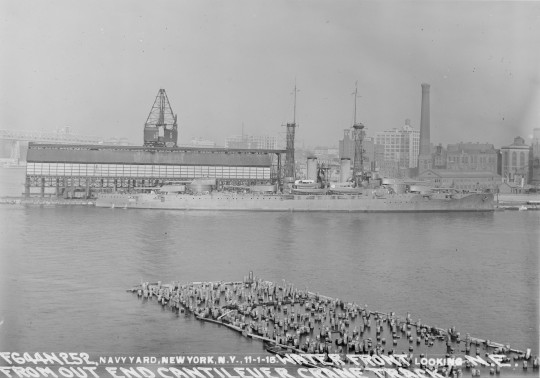
#USS Texas (BB-35)#USS Texas#New York Class#Battleship#Dreadnought#Battleship Texas#November#USS New York (BB-34)#USS New York#USS Florida (BB-30)#USS Florida#USS Utah (BB-31)#USS Utah#Florida Class#1915#united states navy#us navy#navy#usn#colorized photo#my post
30 notes
·
View notes